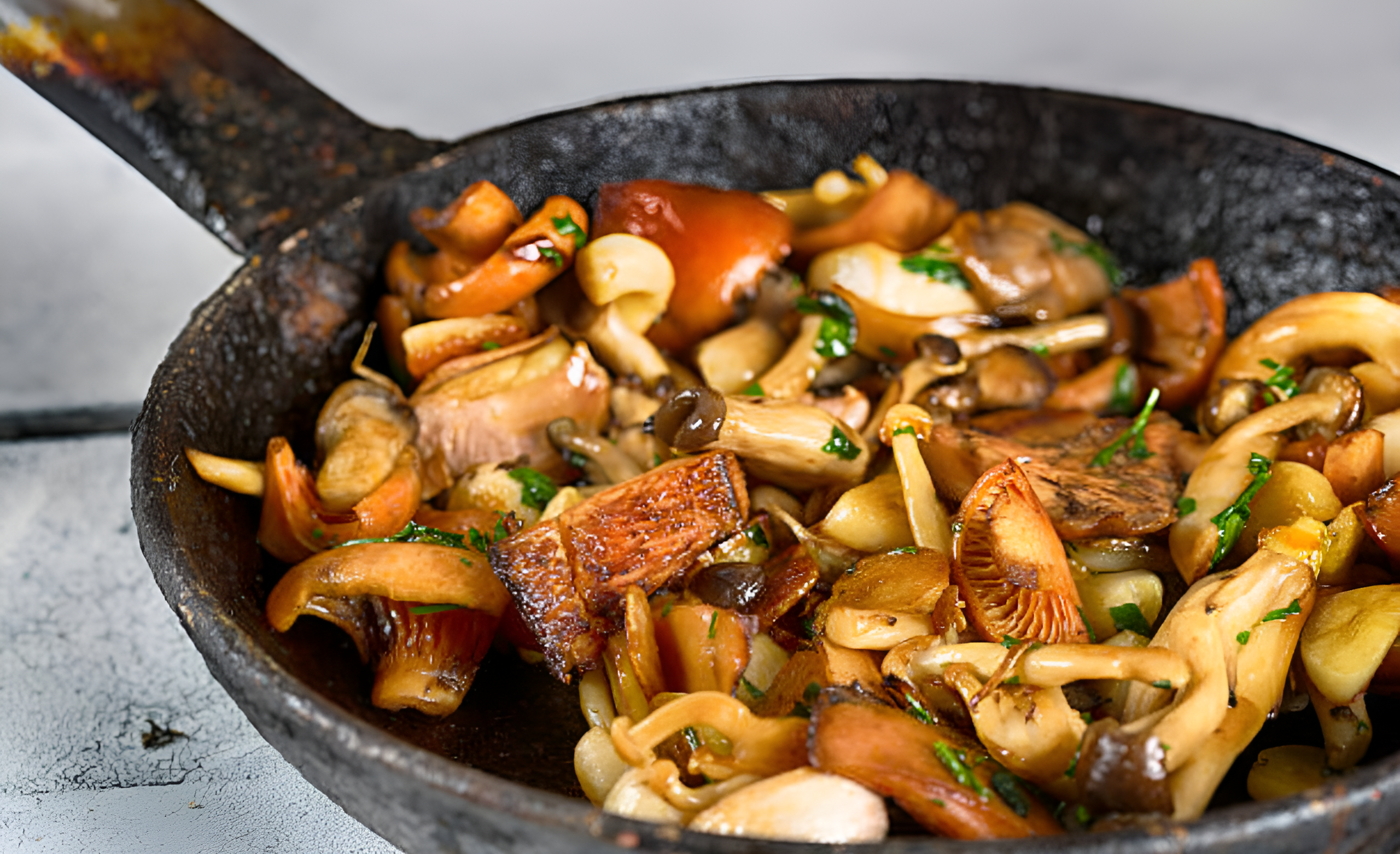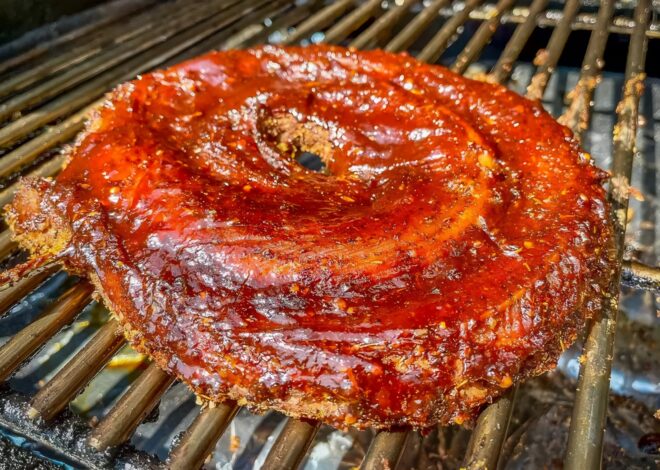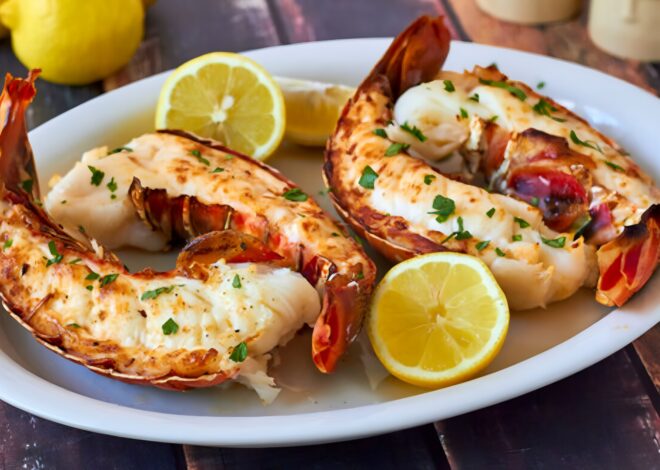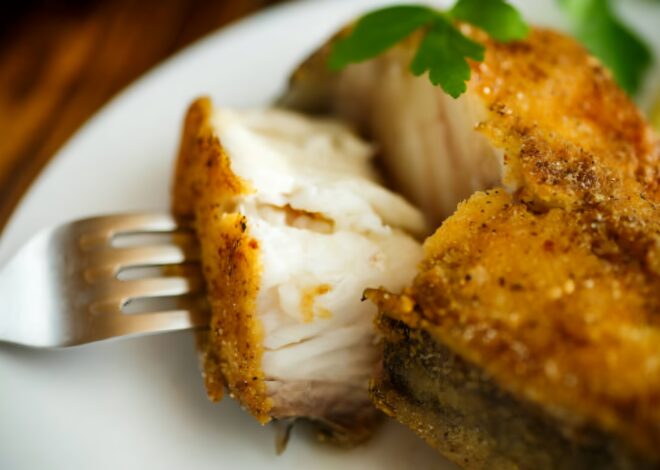
How To Cook Wild Mushrooms
Welcome to our step-by-step guide on how to cook wild mushrooms. Wild mushrooms are nature’s hidden gems, bursting with flavor and nutritional benefits. They hold a certain allure that beckons culinary adventurers to seek them out in the woods, embarking on an exhilarating quest of foraging.
Whether it’s their earthy aroma or unique textures, these fungi can elevate any dish from ordinary to extraordinary. For many, wild mushrooms represent not just food but a passion—a connection to the great outdoors and a celebration of seasonal ingredients.
With numerous varieties available, each offering distinct tastes and health benefits, learning how to cook wild mushrooms opens up a world of delicious possibilities. Join us as we explore everything you need to know about cooking with wild mushrooms—from identifying safe varieties to mastering mouthwatering cooking techniques that will impress your family and friends. Get ready to dive into this fun adventure!
Health Benefits of Wild Mushrooms
Wild mushrooms are not just a culinary delight; they pack a serious nutritional punch. Rich in vitamins, these fungi provide essential nutrients like B vitamins and vitamin D, which support energy metabolism and bone health. They are also low in calories while being high in fiber.
This makes them an excellent choice for those looking to maintain or lose weight. The unique compounds found in wild mushrooms can boost your immune system as well, helping your body fend off illness more effectively. Many varieties contain antioxidants that combat oxidative stress, protecting cells from damage.
Some studies even suggest that certain mushrooms may have anti-inflammatory properties. Including wild mushrooms in your diet could enhance overall wellness while adding depth to your meals. Their diverse flavors and textures make them a versatile ingredient worth exploring further than the average grocery store selection.
Common Types of Wild Mushrooms and their Characteristics
Wild mushrooms come in diverse varieties, each with its own set of characteristics. The morel is a favorite among foragers. Its honeycomb appearance and unique flavor make it highly sought after. Chanterelles are another popular choice. They have a delicate, fruity aroma and trumpet-like shape that sets them apart.
Their golden color can brighten any dish. Porcini mushrooms are known for their meaty texture and nutty taste. Often used in Italian cuisine, they’re excellent when dried or fresh. The oyster mushroom is easily recognizable by its fan-shaped cap and soft gills underneath. It has a mild flavor that absorbs spices beautifully.
The shiitake mushroom offers an earthy richness, perfect for stir-fries or broths. It’s renowned not just for taste but also for its culinary versatility across various cuisines. Each of these wild mushrooms brings something unique to the table, making them delightful ingredients to explore in your cooking adventures.
Safety Precautions for Picking and Eating Wild Mushrooms
When it comes to wild mushrooms, safety is paramount. Identification is key. Familiarize yourself with both edible and toxic varieties before you venture out. Always carry a reliable field guide or download an app dedicated to mushroom identification. A single mistake can lead to serious consequences.
Inspect your finds thoroughly. Look for signs of pests, decay, or discoloration. Freshness matters in ensuring a safe culinary experience. Consider picking mushrooms in areas free from pollutants—avoid those near roadsides or industrial sites where toxins may be present.
If you’re unsure about any mushroom’s edibility, don’t take the risk. Consult an expert or join local mycology groups for guidance and support. Cook all wild mushrooms before eating them; heat can neutralize certain toxins found in some species. Enjoying nature’s bounty should never come at the expense of your health!
Proper Cleaning and Preparation Techniques
Cleaning wild mushrooms requires a gentle touch. Start by brushing off any dirt with a soft brush or cloth. Avoid soaking them in water, as this can make them soggy and dilute their flavor. If you encounter stubborn grime, rinse quickly under cold running water.
Be sure to dry them immediately using a clean towel. This prevents excess moisture from affecting your cooking process. Preparation is equally important. Trim the stems if they are tough or dirty, but leave enough for stability while cooking. For larger varieties like portobellos, removing the gills may help reduce bitterness and improve overall texture.
Slice or chop your mushrooms according to your recipe’s needs. Uniform sizes cook evenly and enhance presentation on the plate. Embrace these techniques to elevate your wild mushroom experience before they hit the heat!
Cooking techniques for wild mushrooms:
Each technique brings something unique to your culinary adventure!
A. Sautéing
Sautéing is a fantastic way to bring out the rich flavors of wild mushrooms. It’s quick and allows you to control texture while retaining moisture.
Begin by heating your skillet over medium-high heat. Add a splash of olive oil or butter; both work wonderfully with mushrooms. Once hot, toss in your cleaned and sliced mushrooms.
Stir them occasionally for even cooking, ensuring they get that beautiful golden-brown color. The key here is not overcrowding the pan; cook in batches if necessary to allow for proper caramelization.
Season with salt and pepper towards the end of cooking to enhance their natural umami flavor without drawing out too much moisture early on. Fresh herbs like thyme or parsley can be added just before serving for an aromatic finish that’s hard to resist.
B. Roasting
Roasting wild mushrooms brings out their natural flavors and adds a delightful texture. Preheat your oven to around 400°F (200°C).
Begin by cleaning your mushrooms gently with a damp cloth, removing any dirt without soaking them in water. Slice larger varieties for even cooking while leaving smaller ones whole.
Toss the mushrooms with olive oil, salt, and pepper. Optional seasonings like garlic or thyme can elevate the taste further. Spread them evenly on a baking sheet; avoid overcrowding.
Let them roast for about 20 minutes until they’re golden brown and tender. The high heat caramelizes the sugars, creating that irresistible umami flavor we all love.
Serve roasted mushrooms as a side dish or toss them into salads for extra depth. Their earthy aroma fills the kitchen, making it an experience to savor long before you take that first bite.
C. Grilling
Grilling wild mushrooms brings out their smoky flavors and enhances their natural textures. The high heat caramelizes the edges, creating a delightful contrast with the tender insides.
Before you start, choose sturdy varieties like portobello or shiitake. These hold up well on the grill and won’t fall apart easily. Slice them thickly for even cooking.
Preheat your grill to medium-high heat. Brush the mushrooms lightly with olive oil and season them with salt, pepper, or your favorite herbs. This will elevate their taste while preventing sticking.
Place them directly on the grates or use a grilling basket for smaller types like chanterelles or oyster mushrooms. Grill each side for about 3-5 minutes until they develop those beautiful char marks.
Serve grilled mushrooms as a side dish, in salads, or as a topping for steak burgers to add an earthy twist to any meal.
Delicious Recipes Using Wild Mushrooms
Wild mushrooms can elevate any dish, adding depth and flavor that is truly unique. One delightful recipe to try is a wild mushroom risotto. Creamy arborio rice pairs perfectly with sautéed chanterelles, shiitakes, or morels for an earthy twist. Another option is a wild mushroom pasta. Toss freshly cooked noodles with sautéed garlic, olive oil, and your choice of mushrooms.
Finish it off with grated parmesan for a simple yet decadent meal. For something heartier, consider crafting wild mushroom soup. Blend assorted mushrooms with onions and herbs in vegetable broth for a comforting bowl of goodness. Don’t forget about pizza! Top homemade dough with ricotta cheese and sautéed wild mushrooms before baking to crispy perfection—a culinary treat everyone will adore.
Exploring the World of Wild Mushroom Foraging
Foraging for wild mushrooms is an adventure that connects you with nature. It’s about discovering hidden gems in forests, fields, and even your backyard. As you wander through the woods, your senses come alive. The earthy aroma of damp soil and the crunch of leaves underfoot heighten the experience.
Each step can lead to a delightful find—perhaps a cluster of chanterelles or a solitary porcini. Knowledge is vital when foraging. Familiarize yourself with different species and their habitats. Some mushrooms are edible while others are toxic or deadly. A good field guide or app is essential for identifying safe varieties.
Joining local foraging groups can also enhance your skills. Sharing experiences with fellow enthusiasts opens doors to valuable tips and tricks. Whether you’re seeking sustenance or simply enjoying the thrill of discovery, wild mushroom foraging offers both excitement and tranquility in nature’s embrace.
Conclusion: Cooking Wild Mushrooms
Cooking wild mushrooms opens up a world of flavors and textures that can elevate any dish. These unique ingredients not only enhance the culinary experience but also offer numerous health benefits. With an understanding of different types, safety precautions, and proper cooking techniques, anyone can confidently incorporate wild mushrooms into their meals.
Whether you choose to sauté them for a quick side dish, roast them for added depth in your recipes, or grill them for a smoky flavor burst, the possibilities are endless. The delightful variety available means there’s something to suit every palate. For those adventurous enough to forage for their own wild mushrooms, it’s both an exciting hobby and a way to connect with nature.
Just be sure to properly identify what you’re picking and adhere strictly to safety guidelines. So why not dive into the art of cooking wild mushrooms? Experiment with new recipes or add these earthy delights into your favorite dishes. Embrace the robust flavors they bring—your taste buds will thank you!



